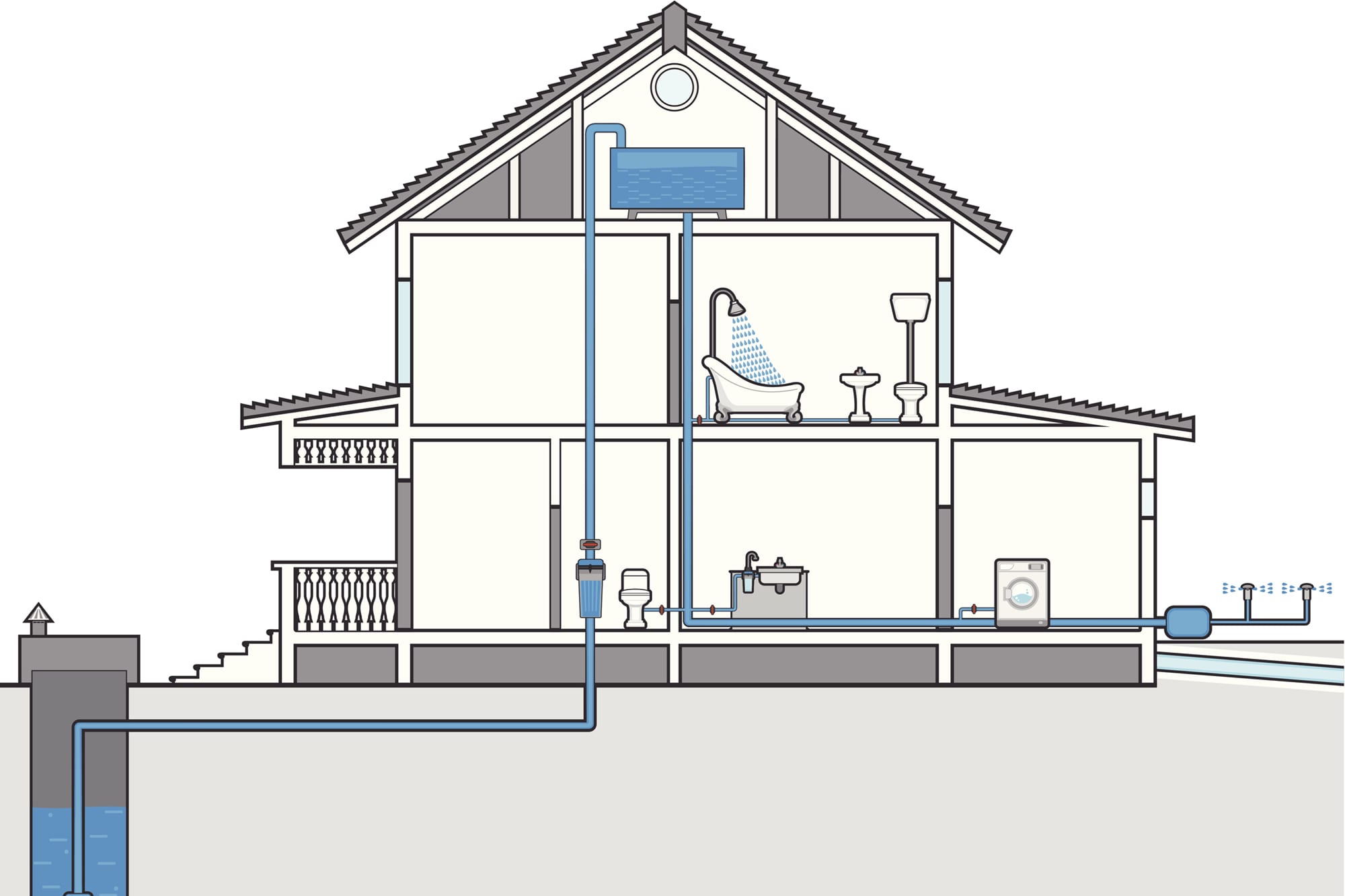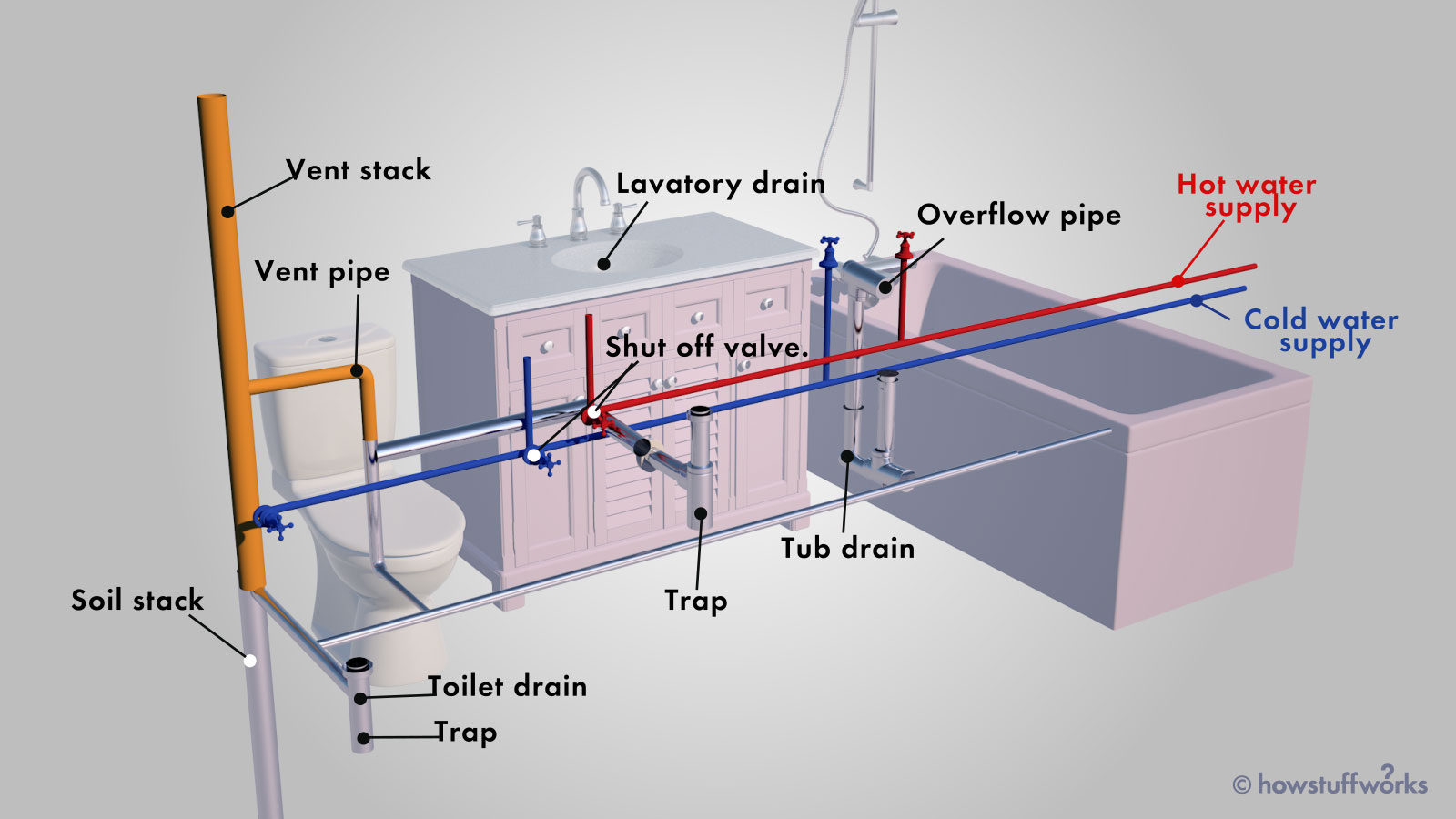A Closer Look at The Layout of Your House's Plumbing System
A Closer Look at The Layout of Your House's Plumbing System
Blog Article
Were you on the lookout for help involving Anatomy of a House: Understanding the Components?

Recognizing exactly how your home's plumbing system works is crucial for every single house owner. From delivering tidy water for drinking, food preparation, and bathing to securely removing wastewater, a properly maintained pipes system is important for your family members's health and wellness and convenience. In this detailed overview, we'll check out the elaborate network that composes your home's pipes and offer pointers on maintenance, upgrades, and taking care of common problems.
Introduction
Your home's plumbing system is greater than just a network of pipelines; it's a complex system that ensures you have accessibility to clean water and effective wastewater elimination. Recognizing its components and how they collaborate can aid you avoid pricey repairs and make sure every little thing runs efficiently.
Basic Components of a Plumbing System
Pipelines and Tubes
At the heart of your pipes system are the pipelines and tubes that bring water throughout your home. These can be made from numerous materials such as copper, PVC, or PEX, each with its advantages in terms of toughness and cost-effectiveness.
Fixtures: Sinks, Toilets, Showers, etc.
Components like sinks, bathrooms, showers, and tubs are where water is utilized in your house. Recognizing how these fixtures link to the pipes system aids in diagnosing troubles and intending upgrades.
Valves and Shut-off Points
Valves control the flow of water in your plumbing system. Shut-off valves are essential during emergencies or when you need to make repairs, allowing you to separate parts of the system without interfering with water flow to the entire house.
Supply Of Water System
Main Water Line
The major water line attaches your home to the local water supply or a private well. It's where water enters your home and is dispersed to numerous components.
Water Meter and Stress Regulator
The water meter steps your water usage, while a stress regulatory authority makes sure that water streams at a safe pressure throughout your home's pipes system, protecting against damage to pipes and components.
Cold Water vs. Warm water Lines
Comprehending the distinction in between cold water lines, which provide water directly from the main, and warm water lines, which lug heated water from the water heater, aids in repairing and planning for upgrades.
Water drainage System
Drain Pipes Pipeline and Traps
Drain pipes carry wastewater far from sinks, showers, and commodes to the drain or septic tank. Catches stop drain gases from entering your home and also catch debris that could create blockages.
Ventilation Pipes
Air flow pipelines enable air into the drain system, preventing suction that can slow down drainage and create traps to vacant. Appropriate ventilation is crucial for preserving the integrity of your plumbing system.
Importance of Appropriate Drainage
Making certain proper water drainage avoids backups and water damage. On a regular basis cleaning up drains pipes and preserving catches can stop costly repair services and expand the life of your plumbing system.
Water Heating Unit
Sorts Of Water Heaters
Hot water heater can be tankless or traditional tank-style. Tankless heating systems heat water as needed, while containers store warmed water for immediate usage.
Upgrading Your Plumbing System
Factors for Upgrading
Updating to water-efficient fixtures or changing old pipelines can improve water top quality, reduce water expenses, and raise the value of your home.
Modern Pipes Technologies and Their Benefits
Discover innovations like clever leak detectors, water-saving bathrooms, and energy-efficient hot water heater that can save cash and reduce environmental impact.
Expense Factors To Consider and ROI
Calculate the in advance prices versus long-term financial savings when considering plumbing upgrades. Several upgrades pay for themselves with lowered utility expenses and less fixings.
Just How Water Heaters Connect to the Plumbing System
Comprehending just how hot water heater attach to both the cold water supply and hot water circulation lines assists in detecting issues like insufficient hot water or leaks.
Upkeep Tips for Water Heaters
Consistently flushing your water heater to remove sediment, inspecting the temperature level setups, and inspecting for leaks can prolong its life-span and boost energy efficiency.
Common Plumbing Issues
Leaks and Their Causes
Leaks can happen due to aging pipes, loose installations, or high water stress. Resolving leakages promptly protects against water damages and mold growth.
Clogs and Blockages
Clogs in drains pipes and bathrooms are frequently triggered by flushing non-flushable products or an accumulation of grease and hair. Utilizing drain screens and being mindful of what decreases your drains can stop blockages.
Indications of Plumbing Issues to Look For
Low water stress, slow-moving drains, foul odors, or unusually high water bills are signs of potential plumbing issues that ought to be dealt with quickly.
Plumbing Maintenance Tips
Regular Inspections and Checks
Set up yearly plumbing evaluations to catch problems early. Seek indicators of leakages, rust, or mineral accumulation in faucets and showerheads.
DIY Upkeep Tasks
Straightforward jobs like cleaning faucet aerators, checking for commode leakages utilizing dye tablets, or shielding revealed pipes in chilly climates can prevent significant pipes issues.
When to Call a Professional Plumber
Know when a pipes problem requires professional experience. Trying complicated repairs without correct understanding can result in more damage and greater fixing prices.
Tips for Minimizing Water Usage
Easy habits like fixing leakages immediately, taking shorter showers, and running complete tons of laundry and recipes can preserve water and reduced your utility bills.
Eco-Friendly Pipes Options
Take into consideration sustainable plumbing products like bamboo for flooring, which is durable and environmentally friendly, or recycled glass for countertops.
Emergency situation Readiness
Actions to Take During a Plumbing Emergency situation
Know where your shut-off valves are located and just how to shut off the water supply in case of a ruptured pipe or significant leak.
Relevance of Having Emergency Situation Contacts Convenient
Keep call information for local plumbing technicians or emergency services conveniently available for fast reaction throughout a plumbing situation.
Environmental Influence and Conservation
Water-Saving Fixtures and Devices
Installing low-flow faucets, showerheads, and toilets can substantially reduce water usage without sacrificing performance.
Do It Yourself Emergency Fixes (When Appropriate).
Short-lived fixes like using air duct tape to spot a dripping pipe or putting a container under a leaking tap can minimize damage until an expert plumbing professional gets here.
Verdict.
Comprehending the makeup of your home's pipes system empowers you to maintain it efficiently, conserving money and time on fixings. By following regular maintenance regimens and remaining educated about contemporary plumbing modern technologies, you can ensure your plumbing system operates efficiently for years to come.
HOW YOUR PLUMBING SYSTEM WORKS
Which Pipes Do What?
Blue lines = fresh water supply entering the building Red lines = hot water supply entering the building Grey lines = pipes carrying waste away from the building and venting pipes carrying gases away from the building (through the roof) YOUR MAIN PLUMBING SYSTEMS
There are two main plumbing systems that support your home s basic plumbing needs one that brings clean water into your home, and one that sends dirty water away from your home. Connected to the toilet, bath, shower, and other faucets in your home, these two systems keep your water flowing in the right directions.
ACCESSING FRESH WATER
Fresh and clean water is brought into your home through the main water supply line . Filtered through one pipe, this water is pressured to flow into the various fixtures in your home at any given time.
This water can be sourced from a well located on your property, a pond or river (mostly cottages), or, as in most cases, from the city s municipal water treatment centre. However, it is important to note that water that is untreated, such as the water siphoned from ponds or rivers, may not be safe to drink. Personal water supplies always need to be treated for hardness and contaminants before consumed.
MUNICIPAL WATER SUPPLIES
Improve taste and odour Remove sediment Eliminate hardness Reduce chlorine COLD WATER SUPPLY VS. HOT WATER SUPPLY
Cold water flows into your home or building through the service line, which then distributes hot or cold water to your fixtures. This line is most commonly run through a central column that runs floor to floor. Hot water runs in short and straight pipes as the longer the pipeline, the more heat that will be lost in the transfer. Having shorter pipes also allows residents to access hot water more quickly.
WASTE WATER SYSTEM
Your wastewater system is divided into two parts pipes that send wastewater away from your home and venting pipes that send sewer gas away from your home. Sewage water travels through pipes that flush the water and waste towards local sewers that are operated and managed by your city or town. Most sewer systems rely on gravity to move the wastewater to where it needs to go.
The further away from your toilet or sink, the larger wastewater pipes become. This allows for waste to be disposed of from various parts of your home or business at once without pipe blockages. The angle and flow of these pipes are also essential for keeping your waste pipes clear of build up.
https://harrisplumbing.ca/how-your-home-plumbing-system-works/

Hopefully you enjoyed reading our piece about The Inner Workings of Your Home's Plumbing. Thanks a lot for taking time to read our blog post. Those who enjoyed our blog entry please don't forget to pass it around. Thank you so much for taking the time to read it.
Call Today Report this page